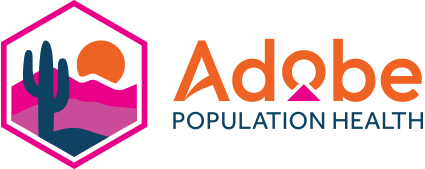In the quiet expanses of rural and tribal America, nearly 61 million people—about a fifth of the country’s population—confront a reality far removed from the urban healthcare experience. These communities, scattered across vast and often rugged terrains, face significant barriers to healthcare access, compounded by a notable scarcity of medical professionals and the logistical challenges of traveling long distances for medical care. Why? Because, simply put, health systems aren’t designed for rural areas – they’re built around urban and suburban communities.
Residents in rural America, who are on average older and sicker than their city-dwelling counterparts, find themselves at a greater risk of dying from heart disease, cancer, unintentional injuries, chronic lower respiratory disease and stroke. The disparity in health outcomes highlights the immediate need for tailored healthcare strategies that address the unique challenges of rural life. Hence, there’s a gap for case management in healthcare plans to serve as a potential lifeline, promising to bridge the gap between rural residents and the essential health services they require.
Why Is Rural America So Behind in Healthcare?
Rural America conjures up images of idyllic landscapes where life moves at a slower pace, where community ties are strong and traditions hold significant value. Here, independence is the way of life, which can in itself be a burden. It’s typical for rural residents to handle everything from home repairs to landscaping themselves, but this deeply ingrained self-reliance, while admirable, often extends into how individuals manage their health, sometimes to their detriment.
About three-quarters of America’s counties are rural, housing a fifth of the nation’s population. Yet, despite their smaller populations, these communities face significant challenges. They have higher rates of poverty, obesity, smoking, and alcohol misuse. Life expectancies are shorter, and over the last two decades, health disparities have only intensified. According to the Centers for Disease Control and Prevention, even before the COVID-19 pandemic in 2019, rural death rates were significantly higher than in urban areas—19% higher for males and 21% higher for females.
These health disparities are not just a product of individual lifestyle choices but are deeply rooted in socio-economic and cultural factors. Rural America typically has lower education levels and limited access to specialized healthcare and health information. This is compounded by a healthcare infrastructure that is often underfunded and understaffed, with many areas lacking even basic primary care.
Moreover, the healthcare solutions that work in densely populated urban centers do not translate well to these sparsely populated areas. Traditional health insurance plans and healthcare policies, often designed with urban and suburban settings in mind, fail to address the unique challenges faced by rural communities. This mismatch between needs and services available makes it difficult to implement effective healthcare strategies in these regions, exacerbating the existing disparities.
How Adobe Bridges the Gap
If the COVID-19 pandemic taught us anything, it’s the critical need for accessible healthcare, especially in rural America. Adobe Population Health is addressing this by combining in-home visits with telemedicine, effectively reducing hospitalization rates by approximately 10% among the most vulnerable groups. Beyond direct care, Adobe actively engages with these communities through regular health fairs and community outreach to deliver essential services like health screenings and point-of-care testing right to the residents’ doorstep, alongside vital information on nutrition and immunizations.
Telemedicine has proven invaluable, particularly during the pandemic, by allowing residents to access specialized care without the burden of long-distance travel. However, face-to-face medical appointments will always trump the limited care that can be provided remotely. Hence, Adobe’s investment in face-to-face healthcare in rural communities not only enhances the quality of care but also significantly cuts down wait times for appointments, tackling a major hurdle in healthcare access for sparsely populated areas.
For those living in America’s rural regions, Adobe’s innovative approaches are more than just healthcare solutions; they are essential steps toward reducing disparities and promoting sustainable community development.

